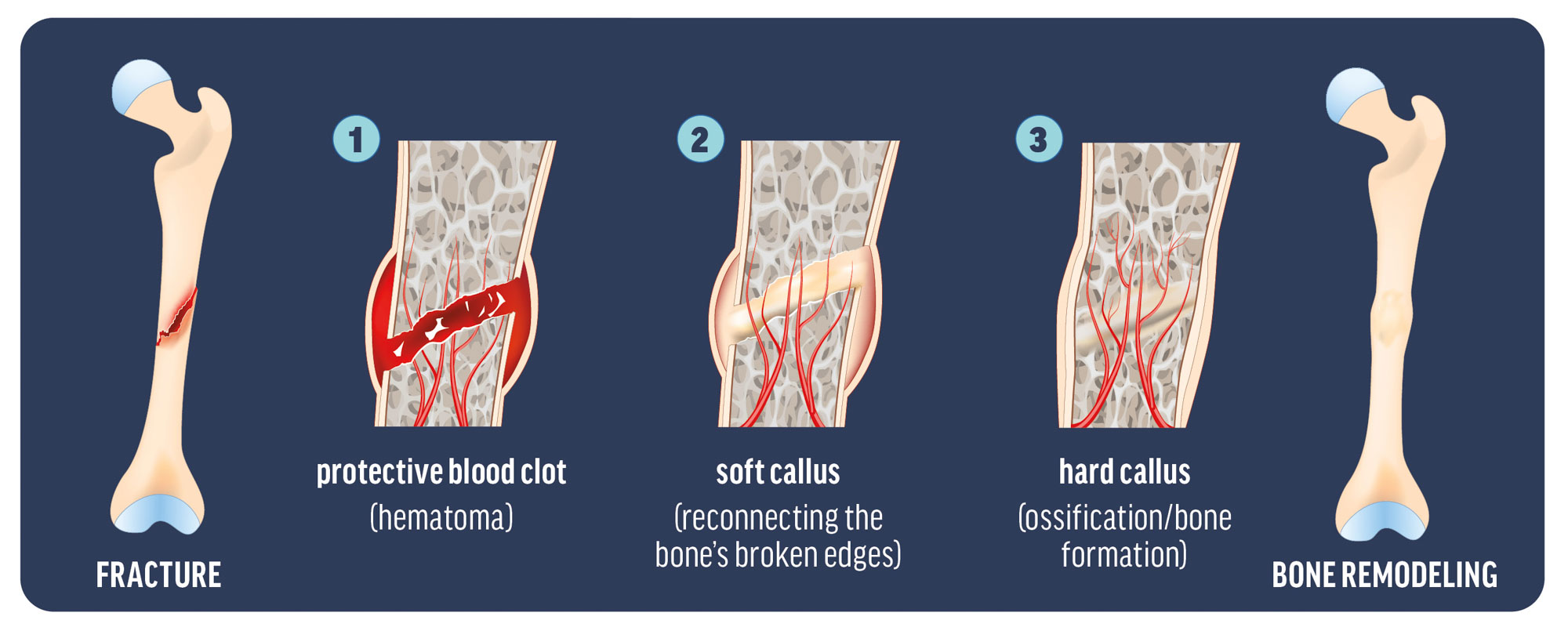From Broken to Whole Again
by Hugo Bravo

How your bones heal and rebuild.
If you’ve ever broken a leg or an arm, you’re not alone. Broken bones, or fractures, are among the most common injuries for people of all ages. On average, people will break two bones in their lifetime. Many breaks are minor, such as a bone chip from an ankle injury, but some, such as a hip fracture, can require surgery and a long recovery period, especially for older people.
How does your body heal a broken bone?
When your bone breaks, a protective blood clot forms at the injury site right away. A doctor will set the bone and apply a cast to keep it aligned and immobile. Next, a soft callus forms to help reconnect the bone’s broken edges. Your body deposits stored calcium and other minerals to harden the callus. New bone cells connect the broken pieces together again, gradually replacing the callus. The full healing process can take a year or even longer, until the bone returns to its normal shape (the final stage of “remodeling”). Source: HealthU/Hackensack Meridian Health

Do broken bones heal stronger?
You might have heard that a healed broken bone will be stronger than before the break, or less likely to break again. Unfortunately, a healed bone is no more and no less likely to break than any other bone.
While an injured arm or leg is in a cast or walking brace, the bone and muscle become weaker because they’re not being used for movement. But as the bone gets built back to heal the fracture, the calcium-fortified section can actually be stronger than the surrounding bone. This may be where the rumor of bones healing stronger than before came from. The difference is only temporary, but there are ways to keep your bones healthy, whether they’ve suffered a break or not.
Two routes to bone health
1) Eat foods rich in calcium and vitamin D. These two nutrients are an important tag team for strong bones. Bones are like storage containers for calcium, which gives them their mass and density. Dairy products, green vegetables, multigrain cereals, tofu, and orange juice are some good sources of calcium. Vitamin D, found in foods like fish, liver, and egg yolks, helps your body absorb calcium. Your doctor may also recommend calcium or vitamin D supplements if you cannot get enough of these nutrients in your diet.
2) Exercise regularly. Bones are living tissue and therefore require movement to get strong. Any type of exercise is good for your body, but weight-bearing impact exercises and muscle-strengthening exercises are the best for your bones.
Weight-bearing exercises stimulate bones to create fresh bone tissue. Activities can be low impact, such as brisk walking; moderate impact, like jogging; or high impact, like playing basketball or volleyball.
Exercises that strengthen muscles—like lifting weights, using resistance bands, or even doing push-ups and pull-ups—make your muscles pull on your bones, which respond by replacing old bone cells with new ones. As your muscles get stronger, they pull harder, making your bones stronger too. If you are new to strength-training workouts, consult a professional trainer or your doctor for help in pacing yourself and avoiding injury.

